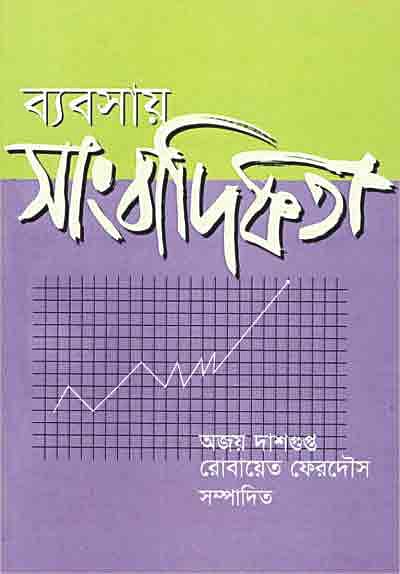A guidebook for business journalists

Babsaye Sangbadikota edited by Ajoy Dasgupta & Robaet Ferdous
Publisher: Shrabon Prokashani; Cover Design: Robin Ahsan; Price: Tk 250.00; Pages: 212 (offset). First Published: 2010
No doubt that economic and business journalism in Bangladesh has been flourishing at a faster rate over the last couple of years. Evan a decade ago, the area of business reporting was mostly confined to macroeconomic issues. Not that such confinement has been wiped out dramatically, but strong signs of qualitative change have emerged.
Against this backdrop, the book, Babsaye Sangbadikota (Business Journalism), co-edited by Ajoy Dasgupta and Robaet Ferdous can be considered an important contribution for our business reporters. Dasgupta is a senior and experienced economic journalist while Ferdous is an associate professor in the journalism department of Dhaka University.
It is a handbook on different aspects of business journalism so that reporters can get a clear idea about their working arena.
The title of the book suggests that the editors (also authors) try to focus on journalism and reporting on business. But going through the book, it is clear that they extend their efforts to understanding economic reporting, which is a bigger landscape.
Usually business journalism is considered a diversified segment of economic journalism, while the other important segment is financial journalism. Financial journalism is confined to financial markets as well as the financial sector. In the developed countries, where financial markets are very big and highly complex, financial journalism gets prominence.
To say meticulously, business journalism does not necessary cover the financial sector; it rather concentrates on real world business activities -- from small and medium enterprises (SME) to trading to international trade. Thus, the scope of business journalism is wide but confined.
And economic journalism brings all these into its basket along with other related, broader issues, i.e. growth and inflation. Nevertheless, the terms 'economic journalism' and 'business journalism' are frequently used interchangeably. In that sense, the book, Babsaye Sangbadikota, is on the right track.
The book has three parts. The first part sheds light on the basics of business journalism. In fact, this is the most important part of the book as authors presented relevant examples with every topic discussed here. This part also includes discussions on budget reporting, stock market reporting and ethics in business journalism.
On stock market reporting, reference to the 1996-97 stock market boom and crash and some relevant news items published at that period are made. If one compares the present situation in stock market reporting with that period, as briefly explained in this section, the reader will be surprised to learn that even after 13-14 years, much qualitative improvements have not been made.
Environment and gender sensitivities are growing in the field of journalism. The authors try to drag these sensitivities in business journalism in the context of Bangladesh. These can be interesting areas to explore for the reporters.
This part also provides some important tips and a checklist for editing business news. Techniques of news presentation are also discussed in short.
A separate section on electronic and online journalism is a useful one. The surge in electronic media and web-based newswire opens new challenges for business journalism in Bangladesh.
In the second part of the book, there are seven news items, reprinted from local and Indian newspapers. These items are used to evaluate business news. The authors pointed the strengths and loopholes of news in line with the basic requirements of business journalism. Extracts from local and international newspapers are helpful and readers will be able to know how things are going on in other countries.
But this part could have been more illustrative by including more news items. Also, news items in different newspapers on the same event or topic published on the same day could have been presented and compared.
In the third part, a brief on the Bangladesh economy is presented. There are a few glossaries, address of relevant websites, addresses of few trade bodies with small introductions, and the names of a few books are complied as an annexure.
All these reflect a spacious effort to formulate an effective guidebook for business journalists as well as students pursing the subject, but not the optimal effort the authors-cum-editor put in. Nevertheless, young and novice business journalists should obtain a copy of the book.

 For all latest news, follow The Daily Star's Google News channel.
For all latest news, follow The Daily Star's Google News channel. 



Comments